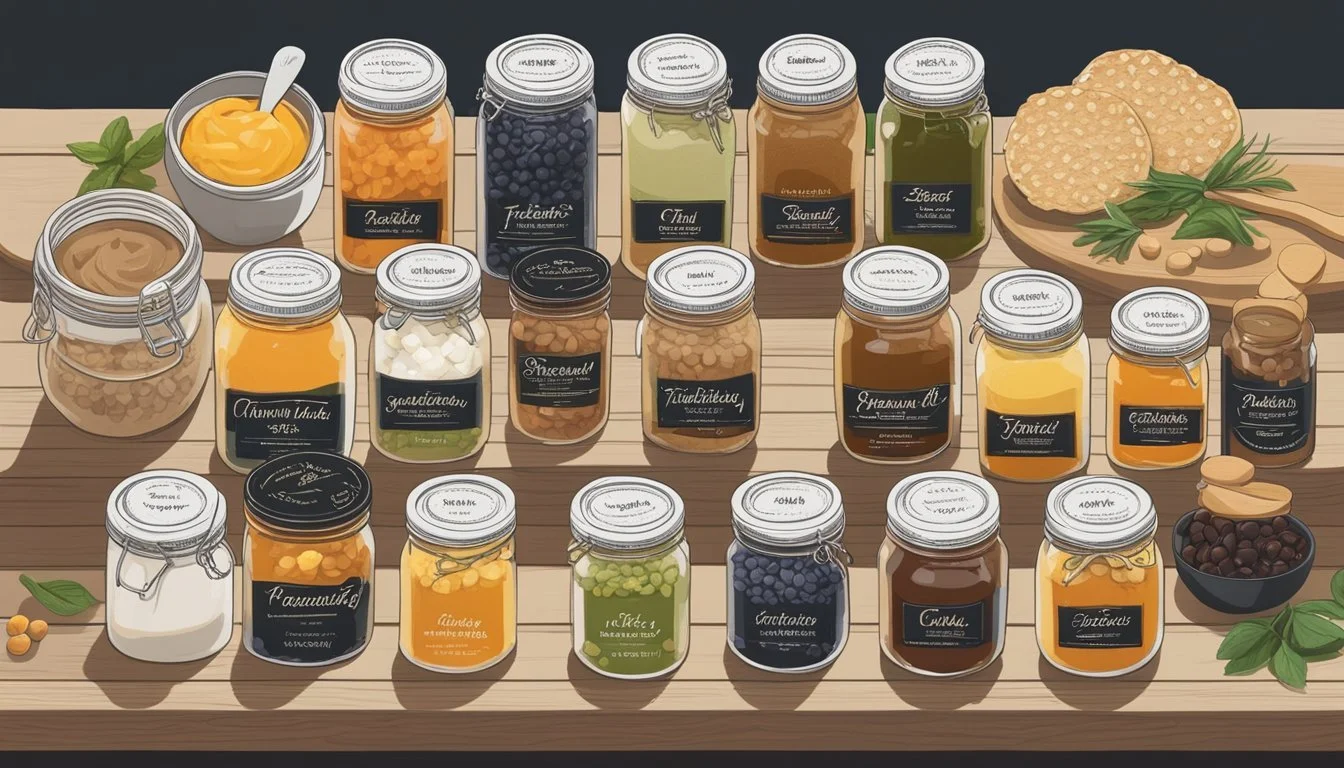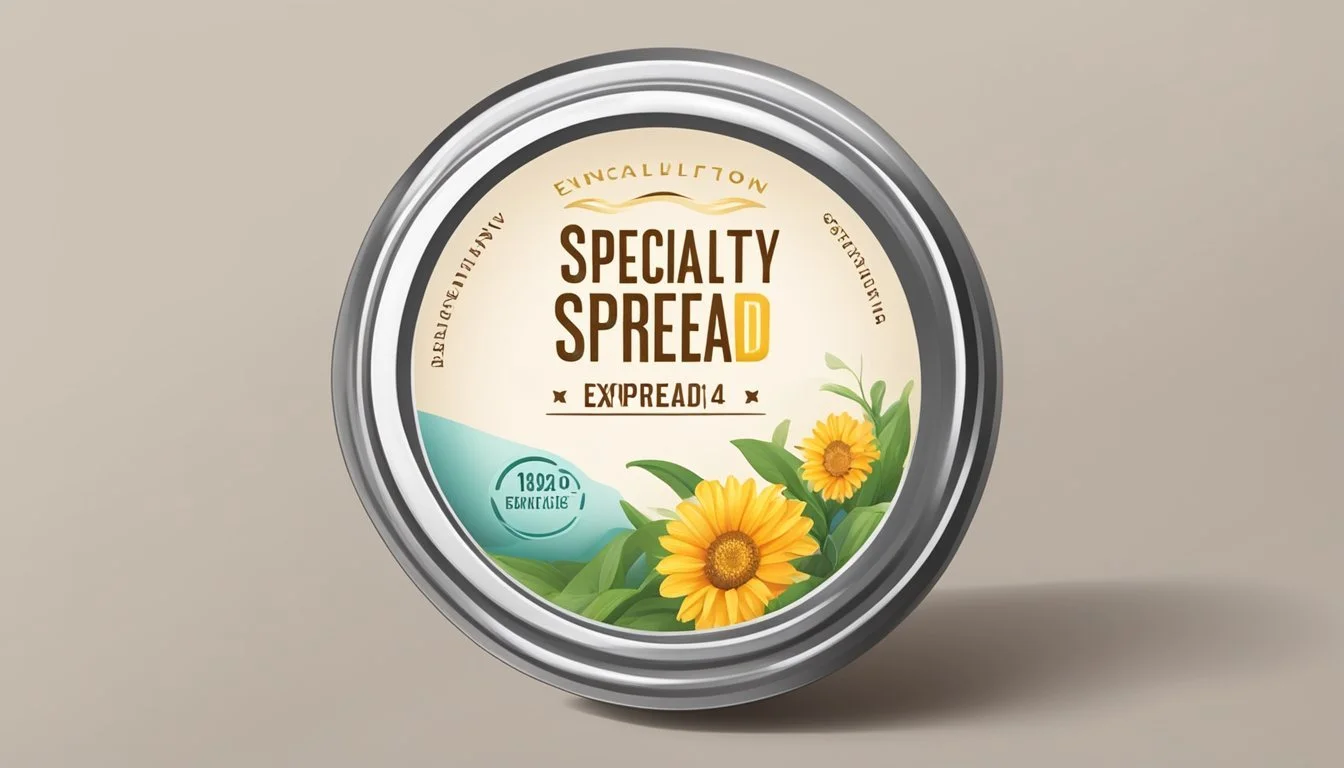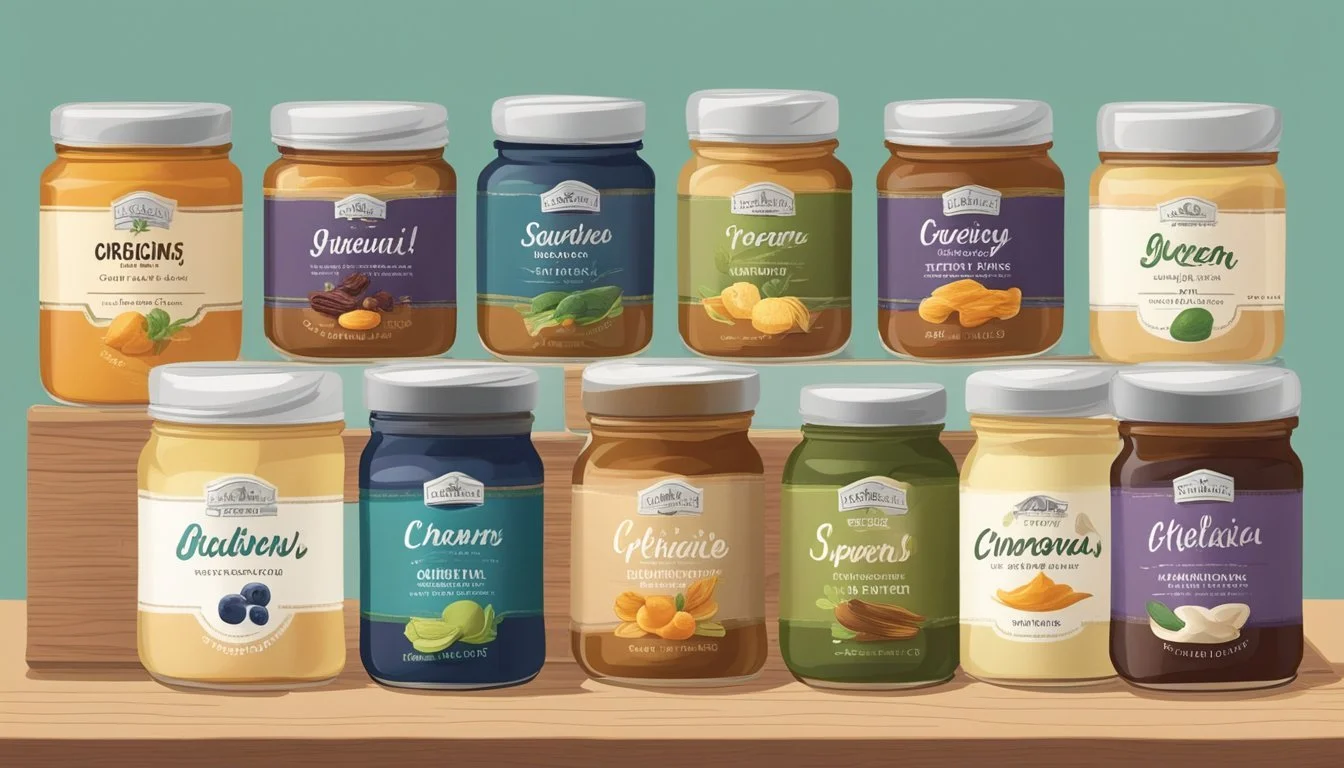How Long Do Specialty Spreads Last?
Shelf Life and Preservation Tips
When it comes to specialty spreads – such as jams, nut butters, and spreads made from cheeses or vegetables – understanding their shelf life is essential for both safety and quality. These products vary in their ingredients and preservative contents, which significantly influences how long they remain safe and flavorful to consume. Typically, unopened specialty spreads have a longer shelf life due to the sealed environment that inhibits the growth of bacteria and mold.
Once opened, however, the shelf life can vary. Factors like the type of spread, the presence of natural preservatives like sugar and salt, and how the spread is stored all come into play. For example, an opened jar of jam with high sugar content may last longer in the refrigerator than a freshly made hummus that lacks preservatives and is more susceptible to microbial growth. Proper storage is key, and most opened specialty spreads should be kept in the refrigerator to maintain quality and prevent spoilage.
Consumers often rely on "best by" dates as a guide, but they can also use their senses to assess the freshness of a spread. Any noticeable changes in color, texture, or odor are indicators that the product may no longer be at its best quality. It is important for consumers to understand these signs and practice good food storage habits to extend the life of their specialty spreads.
Understanding Specialty Spreads
Specialty spreads, such as organic or vegan spreads, are unique in their composition and factors affecting their shelf life. The reader should understand that these spreads vary widely in ingredients and preservation methods, which can influence their longevity.
Composition and Types
Specialty spreads are often tailored to meet particular dietary needs or preferences, including organic, vegan, and gluten-free options. Their ingredients may include fruits, nuts, or dairy alternatives, and they are generally thickened with natural agents like pectin. The classification of spreads as certified organic implies that they have been tested and meet specific standards for organic production.
Organic Spreads: Typically free from synthetic pesticides and fertilizers.
Vegan Spreads: Exclude all animal products, such as dairy.
Gluten-Free Spreads: Lacking gluten proteins, making them safe for individuals with gluten intolerance.
Shelf Life Factors
The shelf life of specialty spreads depends on various factors such as their ingredients, preservative methods, and whether they have been tested for longevity. The age of the spread since production can influence its freshness and safety for consumption.
Preservatives: Natural preservatives like pectin can extend shelf life while maintaining an organic label.
Packaging: Properly sealed and protected products last longer.
Storage Conditions: Consistent, cool temperatures away from direct sunlight preserve quality.
Preservation and Storage
The shelf life of specialty spreads depends significantly on proper preservation and storage techniques. Maintaining the correct temperature and cleanliness is critical to extend the lifespan of these products.
Optimal Storage Conditions
Specialty spreads, such as gourmet jams or exotic nut butters, should be stored in cool, dark locations to preserve their quality. Refrigeration is necessary once the product has been opened, and the ideal temperature range is between 35°F and 40°F.
Hard surfaces should be clean to avoid cross-contamination, especially when dealing with spreads that are prone to spoilage. Use clean equipment, such as a knife or spreader, that has not come into contact with other food items to help maintain the spread's purity.
Unopened: Store in a cool, dark pantry away from heat and sunlight.
Opened: Refrigerate and tightly seal to prevent exposure to air or contaminants.
Signs of Spoilage
They must be vigilant about signs of spoilage that can indicate a compromised product. These signs include:
Odors: Any off-smelling aromas are a clear indicator that the spread should not be consumed.
Discoloration: Visible changes in color or the presence of mold growth should be taken as a sign that the spread is no longer safe to eat.
Texture: If the texture of the spread has significantly changed, it might be best to discard it.
Individuals should also follow the expiration dates provided by the manufacturer and perform a visual inspection before use. If in doubt, it is safest to dispose of the product to avoid potential foodborne illness.
Health and Safety Considerations
When storing and consuming specialty spreads, it is crucial to prioritize health and safety to prevent foodborne illness and determine the appropriate time to discard these products. Proper handling and awareness of spoilage indicators are essential for maintaining food safety.
Preventing Foodborne Illness
Foodborne illness is often caused by bacteria, viruses, or other pathogens that can contaminate food products. Specialty spreads, like all perishable items, must be handled with care to prevent the growth of these harmful microorganisms. To ensure safety:
Storage: Keep spreads refrigerated at 40°F (4°C) or below.
Hygiene: Always wash hands thoroughly with soap and water before handling spreads to prevent transferring pathogens from the hands to the mouth, which can trigger an infection.
Utensils: Use clean utensils to serve spreads, avoiding cross-contamination.
Expiry Dates: Heed the manufacturer's expiration dates, as consuming past this period can increase the risk of illness.
When to Discard Spreads
Knowing when to discard specialty spreads is vital to prevent the ingestion of spoiled food, which could lead to a medical emergency. Here are the telltale signs that a spread should be thrown away:
Odor: A sour or unusual smell is a clear indication that the spread is no longer safe to eat.
Mold: Visible mold growth, which can be a cause of respiratory issues if inhaled, means the spread has been compromised.
Texture Changes: If the spread separates, becomes overly liquid, or shows any drastic texture changes, it likely has spoiled.
Taste: If the flavor is off, even without other symptoms, it's best to err on the side of caution and dispose of the product.
Discard any spread if there is a concern about contamination or if it has been left at room temperature for more than two hours, as per safety guidelines. This level of caution can help protect oneself and others from the risks of potentially contagious pathogens and maintain a healthy immune system.
Culinary Uses and Tips
Specialty spreads can elevate ordinary meals into gourmet experiences. When used correctly, they enhance flavors and create new taste profiles through creative pairings.
Enhancing Flavors
Specialty spreads, like gourmet fruit preserves or artisan nut butters, serve as a treat for the taste buds when added to a dish. Here's how one can enhance flavors with spreads:
Fruit Spreads: They can add a sweet or tart note to savory dishes, such as glazing for meats or a base for vinaigrettes.
Nut Butters: Rich and creamy, they contribute depth to sauces and dressings, or act as a hearty spread on whole-grain breads, suitable for a nutritious start to the day before work or school.
Creative Pairings
Finding unique combinations can transform a meal. The following pairings offer a starting point for culinary creativity:
Cheese and Jam: A classic pairing where the sweetness of the jam complements the saltiness of the cheese, perfect for an adult's sophisticated palate or as a fun snack for children.
Spicy Spreads and Cool Dairy: A spicy pepper jam can be balanced with the cooling creaminess of cream cheese or yogurt, making it an exciting dip for parties or family activities.
By integrating specialty spreads into their meals, individuals can unlock a spectrum of flavors that can be enjoyed in a multitude of settings, from a simple family dinner to a festive school event.
Exploring Spread Varieties
The variety of spreads available commercially or prepared at home offers an array of flavors and traditions. Shelf life can vary based on ingredient composition and storage methods.
Commercial vs. Homemade
Commercial spreads are often designed for a longer shelf life due to preservatives and packaging techniques. These products typically have a best before date, and guidelines suggest a refrigerator shelf life of 2-3 weeks once opened. For example, some fruit spreads can last up to 4 weeks in the refrigerator after opening. In contrast, homemade spreads may have a shorter shelf life due to the absence of such preservatives and are generally recommended to be consumed within a week or two.
Commercial Spread Shelf Life: 2-4 weeks after opening
Homemade Spread Shelf Life: 1-2 weeks after preparation
Global Spread Traditions
Spreads are not just culinary additives but also reflect cultural richness. Global Spread Traditions encompass a diversity from avocado-based spreads originating from Mexico to fig spreads associated with Mediterranean cuisine. Avocado spreads have surged in popularity due to their health benefits and versatility in recipes from toast toppings to sandwich fillers. The traditions behind these spreads often dictate their ingredient list and consequently, their shelf life.
Avocado Spreads: Global trend, versatile usage
Fig and Olive Spreads: Mediterranean origins, specific refrigeration guidance
The methods of preparation, local ingredients, and associated food preservation techniques across different cultures directly impact the shelf life and storage conditions for various spreads.
Allergies and Dietary Restrictions
When choosing specialty spreads, individuals with food allergies or dietary restrictions must be vigilant. The primary goal is to avoid triggering an allergic response while still enjoying diverse options.
Identifying Allergen-Free Options
For those with dietary restrictions, sourcing allergen-free alternatives is crucial. This may include spreads made without nuts, soy, dairy, or gluten, depending on the individual's sensitivity. Consumers should seek products that are certified or marketed as "free from" their specific allergens. They may also look for spreads made in dedicated facilities to reduce the risk of cross-contamination. Finding local brands that cater to allergen-free preferences can also provide a safer range of choices.
Reading Labels Carefully
Reading product labels is essential for individuals managing food allergies. This involves:
Checking Ingredient Lists: All ingredients that may trigger an allergy, such as peanuts or milk, should be clearly identified.
Understanding Label Warnings: Phrases like "may contain" indicate potential cross-contamination.
Recognizing Hidden Allergens: Ingredients such as natural flavors or spices can sometimes include allergens.
It's advised for individuals to wash their hands thoroughly after handling spreads to prevent any trace allergens from causing issues like itchy rashes or other skin reactions. In the case of an allergic reaction, it is essential to seek treatment from a healthcare professional. To minimize recurrence, consumers should avoid sharing personal items that may have come into contact with allergens, and inspect spreads for signs of infection if they've been improperly stored or are past their expiry date.
Regulations and Certifications
Regulations and certifications ensure that specialty spreads not only meet specific organic criteria but also adhere to health and safety standards to protect consumers. These regulations are overseen by certifying bodies that dictate stringent compliance with food safety protocols, often including detailed inspections and rigorous testing.
Understanding Organic Labels
When assessing organic labels, consumers and healthcare professionals should verify that a specialty spread is certified organic. This certification entails that the product has been produced without the use of synthetic fertilizers, pesticides, or genetically modified organisms. Regulations regarding organic products are outlined by certifying organizations, which conduct regular audits to confirm compliance. In the context of specialty spreads, the immune system benefits from the absence of harmful additives, endorsing the spread as a healthier choice.
Key points for Organic Labels:
Certified by recognized organizations
Must be free from synthetic additives
Regular compliance audits conducted
Organic products: support immune system health
Health and Safety Standards
Concerning health and safety standards, specialty spreads undergo thorough testing to eliminate the risk of contamination that could lead to a medical emergency. Rigorous controls are put in place to monitor the presence of any harmful pathogens in food products. This process includes analyzing blood samples from donors who may have dealt with animals or products related to the spread, ensuring there's no transmission of zoonotic diseases through blood vessels or otherwise. Specialty spreads are held to high standards for treatment and diagnosis of any potential food-borne illnesses, following research-supported methods to maintain public health and safety.
Health and Safety Standards Checklist:
Prevent contamination to avert medical emergencies
Blood tests & research: confirm no disease transmission
Treatment protocols for food safety incidents
Diagnosis of food-borne illnesses with approved methods
Adherence to these standards is crucial for specialty spreads to be deemed safe for consumption and maintain consumer trust in these health-focused products.
Innovations in Spread Production
The production of specialty spreads has been transformed by technological advancements and research. This section examines these changes and anticipates future trends within the industry.
Technological Advancements
Research has played a crucial role in improving the shelf life and quality of specialty spreads. Through the development of more refined equipment, such as high-precision temperature controls, manufacturers can achieve the perfect conditions required to ensure the longevity and consistency of their products. Innovations in the fields of cells and tissues have also contributed to better understanding the interaction of ingredients on a microscopic level.
Temperature: Innovative technologies maintain optimal temperatures during production to preserve the integrity of spreads.
Surfaces: Equipment with advanced surface materials prevents contamination and enhances safety.
Rate: Enhanced production rates are achieved without compromising the product's quality, utilizing high-efficiency machinery.
Future Trends in Specialty Spreads
Looking ahead, emerging trends point towards an even greater emphasis on preserving the integrity of spreads through the bloodstream and lymph of the production process – that is the flow of ingredients through the production line. Anticipated advancements include:
Automation: The use of automated systems for consistent ingredient mixing and packaging.
Sustainability: Equipment that reduces energy consumption and waste will become standard, driven by environmental concerns and regulation.
By observing these trends, industry players can stay ahead of the curve in the specialty spread market.










